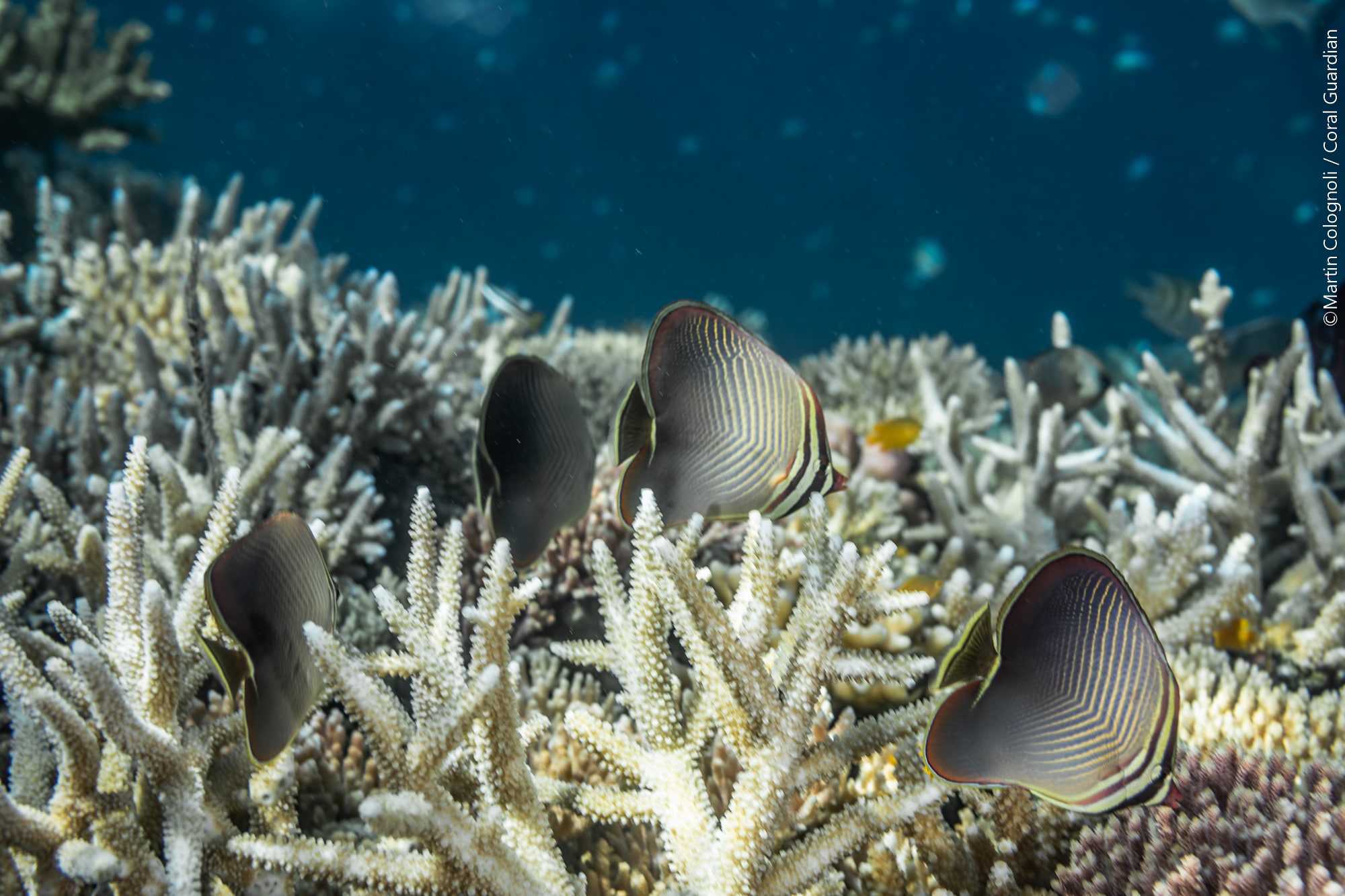The Great Barrier Reef – Towards an ecological collapse?

Coral reefs are living underwater mosaics that offer us an unparalleled spectacle every dive. Often compared to tropical rainforests due to their exceptional diversity, these ecosystems are home to more than a quarter of all marine species, including 4000 species of fishes. In addition to their considerable ecological value, coral reefs have major economic, social, and cultural importance for more than 500 million people around the world.
Despite the economic and ecological goods and services they generate, these ecosystems are threatened by numerous stressors – both on a local scale (overfishing and destructive fishing practices, marine pollution, tourism, coastal development, etc) and by global pressures such as ocean acidification and global warming. Corals are extremely sensitive, and even relatively minor environmental changes can lead to the breakdown of their symbiotic relationship with unicellular algae that live within their tissue and provide essential food and nutrients needed for coral survival. This phenomenon, commonly known as “bleaching,” is characterized by the whitish appearance of the coral organism – devoid of these symbiotic algae that also provide corals with their vibrant colours. Coral bleaching is a natural process that is generally observed when seawater temperatures exceed maximum averages over a short period of time, which can vary according to the region and season.
However, since the 1980s, an increase in the duration, frequency and extent of coral bleaching has been observed in oceans around the world. The cause: global warming combined with a strengthening of the El nino climatic phenomenon in combination with local stressors. To date, the National Oceanic and Atmospheric Administration NOAA has reported three major bleaching episodes. The first occurred in 1998, followed by 2010, and finally the catastrophic event of 2015-2016 (which lasted until 2017), which was the focus of a recent research publication in Nature focusing on the Great Barrier Reef in Australia (GBR).
By the end of 2015, 41% of coral reefs around the world had been exposed to a temperature anomaly equivalent to 4°C above average. During the 2015-2016 heat wave, the extent of coral bleaching was positively related with the recorded temperature. On the GBR, coral colonies experienced a temperature anomaly of 1°C to 8°C above seasonal averages, which lead to widespread mortalities (30-80%) on numerous reefs. Overall, the researchers reported a 30% loss of coral cover over the entire GBR in eight months (March-November 2016). This exceptional bleaching event resulted in a drastic change in the community assemblage and diversity of coral species along the reef, with branching and tabular colonies, complex structural elements of the reef and critical shelters for many species of fish, being the most impacted.
The massive mortalities of coral colonies found on the GBR are an alarming example that underscores the urgent need for action to limit the collapse of both marine and terrestrial ecosystems. Comprehensive actions at the political level must be undertaken. However, it is also up to us as individuals to be the change we seek. Through our lifestyle changes – limiting greenhouse gas emissions and pollution caused by our consumption patterns as well as a gradual transformation of our diet – we can, together, contribute and build a future that will benefit the ecosystems of our planet and future generations.

